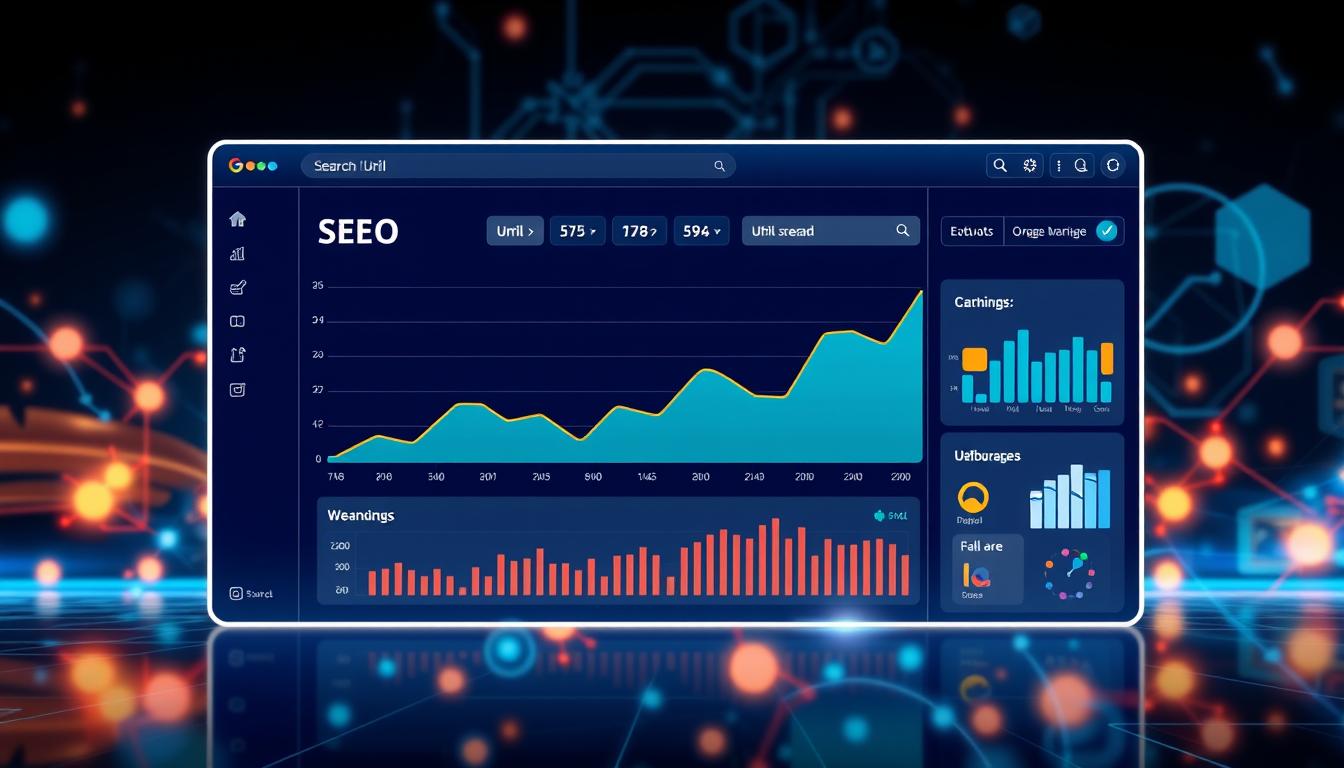5 Common Mistakes to Avoid When Optimizing Meta Tags

Meta tags are an essential element of your website’s search engine optimization (SEO) strategy. They play a critical role in communicating the relevance and value of your content to search engines. Optimizing your meta tags can significantly improve your website’s visibility on search engines like Google. However, there are common mistakes that you should avoid when optimizing meta tags to ensure the best results.
In this guide, you will learn about the five common mistakes to avoid when optimizing meta tags for better SEO. You will also discover techniques to optimize meta tags and improve your website’s visibility on search engines.
Key Takeaways
- Optimizing meta tags is crucial for improving your website’s visibility on search engines.
- Meta tags communicate the relevance and value of your content to search engines.
- Avoid common mistakes when optimizing meta tags to avoid negative impacts on your website’s SEO.
- By choosing the best meta tags and incorporating targeted keywords, you can enhance your website’s SEO performance.
- Regularly monitoring, testing, and analyzing your meta tag performance can help you make necessary adjustments to improve your SEO.
Understanding the Importance of Meta Tags
Meta tags are a crucial component of your website’s search engine optimization strategy. They provide important information about your website to search engines such as Google, allowing them to understand and index your content more effectively.
Meta tags for Google can directly impact your website’s visibility and ranking on search engine results pages (SERPs). By optimizing your meta tags, you can improve your website’s SEO performance and attract more organic traffic.
SEO meta tags should include relevant keywords that accurately describe the content of your website. This will help search engines to identify your website as being relevant to specific search queries, increasing the chances of your website appearing higher up on SERPs.
When creating your meta tags, it’s important to consider your target audience and the type of content you’re offering. By choosing the best meta tags for your website, you can ensure that your content is presented to the right people at the right time.
Meta tags also play a vital role in determining how your website appears on search engine results pages. By crafting compelling meta titles and descriptions, you can encourage users to click through to your website and improve your website’s click-through rate (CTR).
It’s important to structure your meta tags hierarchically, with the most important information appearing first. This will help search engines to understand the key focus of your content and improve your website’s SEO performance.
Finally, it’s essential to monitor and update your meta tags regularly to ensure that they are still relevant and effective. By testing and analyzing your meta tag performance, you can make data-driven decisions to improve your website’s visibility and attract more organic traffic.
Choosing the Best Meta Tags for Your Website
Meta tags provide a brief summary of the content on a website and help search engines index and classify web pages. Choosing the right meta tags is crucial for improving your website’s search engine visibility and page ranking. Let’s explore some of the best meta tags and optimization techniques for your website.
1. Title Meta Tag:
The title meta tag is one of the most important meta tags on a website. It provides a concise description of the page’s content and appears in search engine results as the clickable headline. Therefore, it’s crucial to add relevant keywords and phrases to the title meta tag for better optimization and ranking.
2. Description Meta Tag:
The description meta tag provides a brief summary of the content on the page and appears under the title tag in search engine results. It’s important to craft a compelling and informative description meta tag that accurately represents the content of the page and entices users to click through to your website.
3. Keyword Meta Tag:
The keyword meta tag was once used to indicate keywords that described the content of a page. However, search engines have evolved over the years and no longer rely on this meta tag for ranking. Therefore, it’s best to avoid using the keyword meta tag to prevent keyword stuffing and spamming.
4. Robots Meta Tag:
The robots meta tag instructs search engine crawlers on how to index and classify the page. It can be used to prevent search engines from indexing certain pages or sections of a website. However, use the robots meta tag with caution, as it can impact your website’s visibility and ranking if used improperly.
5. Author Meta Tag:
The author meta tag identifies the author of the content on a page. It’s important to add the author meta tag to your website to establish credibility and authority with your audience and search engines.
When choosing the best meta tags for your website, it’s important to keep your target audience in mind and align your meta tags with the content on your web page. Use relevant keywords and phrases to optimize your meta tags and improve your website’s visibility and ranking on search engines.

Crafting Compelling Meta Titles and Descriptions
Meta titles and descriptions are essential components of your meta tags and play a crucial role in SEO. Optimizing your meta titles and descriptions can significantly impact your website’s visibility on search engines. The following meta tags best practices and SEO tips will help you craft compelling meta titles and descriptions that attract more clicks and improve your website’s SEO.
1. Keep It Short and Sweet
Limit your meta title to 55-60 characters and your meta description to 155-160 characters. This ensures that your meta tags don’t get cut off in the search engine’s results page and remain easy to read for your audience. Use concise and attractive language to make your meta tags stand out.
2. Use Targeted Keywords
Include targeted keywords in your meta title and description. This helps search engines understand the relevance of your content to specific search queries. However, avoid keyword stuffing as this can negatively impact your SEO. Use relevant and natural-sounding keywords that align with your content.
3. Highlight Your Unique Selling Proposition (USP)
Your meta title and description should communicate your USP and differentiate your content from similar websites. This can be achieved by emphasizing what makes your content unique, such as your expertise, authority, or innovative approach.
4. Encourage Action
Use compelling language in your meta tags to encourage action from your audience. Use persuasive terms like “Discover,” “Explore,” “Learn,” or “Get Your Free Guide” to incentivize clicks and drive traffic to your website.
5. Match Your Meta Tags with Your Content
Ensure that your meta title and description accurately reflect the content on your website. Misleading or irrelevant meta tags can lead to a higher bounce rate and negatively impact your SEO. Align your meta tags with your content to create a seamless user experience.
By implementing these meta tags SEO tips and best practices, you can create compelling meta titles and descriptions that improve your website’s ranking and visibility on search engines.
Structuring Meta Tags Hierarchically
One of the most important meta tags optimization techniques is structuring your meta tags hierarchically. This means organizing your meta tags in a strategic order that aligns with the structure of your website’s content.
The hierarchy of meta tags starts with the Title Tag, which should be the most prominent on your page. It is the tag that displays the title of your page on search engine results pages (SERPs).
Next in the hierarchy is the Description Tag, which provides a brief summary of your page’s content. It should be compelling and the right length (between 150 and 160 characters). This is what usually appears below the title tag in the SERP.
After the description tag, comes the Keyword Tag, which is where you should mention all the relevant keywords associated with your page. It is important to fill this tag with relevant keywords but try to avoid keyword stuffing.
The Robots Tag determines whether you want the search engine robots to index your page or follow the links on it. It can be used to prevent indexing of duplicate pages and improve your website’s SEO performance.
Finally, the Viewport Tag should be used to optimize your website for mobile devices. It enables the browser to render your page optimally for the user’s device.
By structuring your meta tags hierarchically, you can help search engines understand the importance and relevance of the content on your website. It enhances your website’s SEO performance and improves your search engine visibility.
Incorporating Targeted Keywords in Meta Tags
Meta tags play a crucial role in optimizing your website for search engines. Including targeted keywords in your meta tags can significantly improve your website’s visibility in search engine results. Here are some meta tags optimization techniques to incorporate targeted keywords:
- Choose relevant keywords: Selecting the right keywords is critical to optimizing your meta tags. Use relevant keywords that align with your content and target audience. Research popular keywords in your niche and use them judiciously in your meta tags.
- Include long-tail keywords: Long-tail keywords are specific phrases that users search for in search engines. Including long-tail keywords in your meta tags can increase the chances of your website appearing in relevant search results.
- Avoid keyword stuffing: Stuffing too many keywords in your meta tags can negatively impact your website’s SEO performance. Use keywords in a natural and organic way to avoid being penalized by search engines.
- Place keywords strategically: Consider placing important keywords at the beginning of your meta tags for maximum impact. Use relevant keywords in your meta title and description to attract more clicks and improve your website’s visibility.
Optimizing meta tags with targeted keywords is a proven technique to improve your website’s SEO performance. By using relevant and strategic keywords, you can boost your website’s visibility in search engine results and drive more traffic to your site.
Optimizing Meta Tags for Mobile Devices
With more and more people accessing the internet on their smartphones and tablets, optimizing meta tags for mobile devices is crucial for improving your website’s SEO. When optimizing meta tags for mobile devices, keep in mind the following techniques:
- Make sure your meta tags are concise and relevant
- Use shorter meta titles and descriptions
- Avoid using too many keywords in your meta tags
- Ensure your website is mobile-responsive
It’s important to create a mobile-friendly website that loads quickly and is easy to navigate. Google’s algorithms prioritize mobile-responsive websites, so make sure your meta tags and overall website are optimized for mobile devices.
Another way to optimize your meta tags for mobile devices is by adapting them to fit the smaller screen sizes of mobile devices. Use shorter and more concise meta titles and descriptions, and ensure that they are still informative and compelling for users.
Example:
| Desktop Meta Tags | Mobile-Optimized Meta Tags |
|---|---|
| Meta Title: Best Pizza in Town | Delicious, Handmade Pizzas | Pizza Palace Meta Description: Looking for the best pizza in town? Look no further than Pizza Palace! Our delicious, handmade pizzas are sure to satisfy your cravings. | Meta Title: Best Pizza in Town | Pizza Palace Meta Description: Looking for the best pizza in town? Look no further than Pizza Palace! |
By optimizing your meta tags for mobile devices, you can improve your website’s visibility and ranking on search engines like Google, leading to increased traffic and engagement from mobile users.
Monitoring and Updating Meta Tags Regularly
Optimizing meta tags is an ongoing process that requires regular monitoring and updating to maintain the best possible SEO performance for your website. It’s not a one-time task, and neglecting it could have a significant impact on your search engine visibility. Here are some meta tags optimization techniques to help you monitor and update your meta tags regularly:
Track Your Meta Tag Performance
One of the essential meta tags optimization techniques is tracking the performance of your meta tags. You can use web analytics tools like Google Analytics to monitor your website’s traffic and see which pages are driving the most traffic. This data will help you identify which meta tags are working well and which ones need improvement.
Update Your Meta Tags Regularly
Updating your meta tags regularly is crucial to ensure that your website continues to rank well in search engines. As you produce new content, make sure that you update your meta tags, including title tags, description tags, and keyword tags, to reflect the changes. Updating your meta tags will help search engines understand your website’s content and improve your search engine visibility.
Use Relevant Keywords
Using relevant keywords in your meta tags is vital for optimizing meta tags. Make sure that your title tags and meta descriptions contain relevant keywords that match the user’s search query. Doing so will help search engines understand the content and relevance of your website, and improve your rankings accordingly.
Review and Remove Duplicate Tags
Reviewing your meta tags regularly is essential for optimizing meta tags. You must review your website to ensure there are no duplicate meta tags, as this can confuse search engines and negatively impact your website’s SEO performance. Use tools like Screaming Frog to identify any duplicate tags on your website and remove them promptly.
By monitoring and updating your meta tags regularly, you can improve your website’s search engine visibility and ensure that it continues to rank well in search engine results. Use the techniques outlined above to optimize your meta tags and stay ahead of the competition.
Leveraging Meta Tags for Social Media Sharing
Meta tags are not only essential for search engine optimization but also for social media sharing. With well-optimized meta tags, you can increase your website’s visibility on popular social media platforms such as Facebook, Twitter, and LinkedIn.
When you share a link on social media, the platform will automatically pull the meta data from your website’s meta tags, including the title, description, and image. By optimizing your meta tags for social media, you can ensure that your content appears correctly, attractively, and engagingly on these platforms, increasing the chances of users clicking through to your website.
To optimize your meta tags for social media sharing, make sure to use a larger and higher quality image that best represents the content you’re sharing. You can also add social media-specific meta tags, such as the “twitter:card” tag, which allows you to create a Twitter-specific summary of your content.
Additionally, you can use Open Graph meta tags, which are specific to Facebook. Open Graph meta tags allow you to control how your content appears when shared on Facebook, including the title, description, and image.
By leveraging meta tags for social media sharing, you can increase your website’s visibility and drive more traffic and engagement.
Testing and Analyzing Meta Tag Performance
Now that you have optimized your meta tags using the techniques we’ve discussed, it’s crucial to track their performance and make informed decisions based on data. Testing and analyzing your meta tag performance is an essential step in the optimization process.
One of the best ways to test your meta tags is with A/B testing. A/B testing involves creating two versions of a page with different meta tags and comparing their performance. You can use tools like Google Analytics to track metrics such as click-through rates and bounce rates to determine which version performs better.
Another valuable tool for analyzing meta tag performance is Google Search Console. It provides insight into how your website appears in search results and allows you to track changes in click-through rates and ranking positions over time.
When analyzing your meta tag performance, pay attention to the keywords you are targeting and the relevance of your meta tags to your content. If you’re not seeing the results you want, it might be time to revise your meta tags and try a different approach.
Remember, optimizing meta tags is an ongoing process. Regularly monitoring and updating your meta tags is essential to maintain your website’s visibility and improve your SEO performance over time.
Conclusion
Congratulations! You have now learned about the common mistakes to avoid when optimizing meta tags, as well as techniques to optimize meta tags for better SEO.
It is essential to understand the importance of meta tags in search engine optimization and how they directly impact your website’s visibility and ranking on Google and other search engines. By choosing the best meta tags for your website, crafting compelling meta titles and descriptions, structuring meta tags hierarchically, incorporating targeted keywords in meta tags, optimizing meta tags for mobile devices, monitoring and updating meta tags regularly, leveraging meta tags for social media sharing, and testing and analyzing meta tag performance, you can enhance your website’s visibility and skyrocket your page rank on search engines.
Implement the strategies and techniques discussed in this guide to optimize your website’s meta tags effectively and improve your SEO. Regularly monitor the performance of your meta tags and make necessary adjustments to enhance your website’s visibility and ranking in search engine results. With these optimizations, you can boost your website’s traffic, engagement, and overall digital success.
FAQ
Meta tags are snippets of code located in the HTML of a webpage that provide information about the webpage to search engines. They help search engines understand what a webpage is about and can influence its visibility in search engine results.
Meta tags are important for SEO because they help search engines understand the content and relevance of a webpage. When properly optimized, meta tags can improve a webpage’s visibility and ranking on search engine results pages, leading to increased organic traffic.
To optimize meta tags, you should focus on including relevant keywords, crafting compelling titles and descriptions, using unique and accurate information, and ensuring the tags align with the content on the webpage. It’s also important to keep an eye on the length and structure of your meta tags, making sure they meet search engine guidelines.
It’s generally recommended to have unique meta tags for each page on your website. This allows you to target specific keywords and provide accurate and relevant information about each page to search engines. However, certain elements like the website’s branding can remain consistent across meta tags.
It’s a good practice to regularly monitor and update your meta tags, especially for high-priority pages or when significant changes occur. Regularly reviewing and optimizing your meta tags can help ensure they remain aligned with your content and continue to contribute to your website’s SEO performance.
Yes, optimized meta tags can enhance your website’s visibility on social media platforms. When someone shares a webpage on social media, the meta tags can influence how the webpage appears in the social media post. By optimizing your meta tags for social media sharing, you can encourage more engagement and traffic from social media channels.
You can analyze the performance of your meta tags by using tools like Google Analytics. Monitor metrics like organic traffic, click-through rates, and conversion rates to understand how your meta tags are impacting your website’s SEO. Make data-driven decisions based on the analysis to optimize your meta tags for better results.





